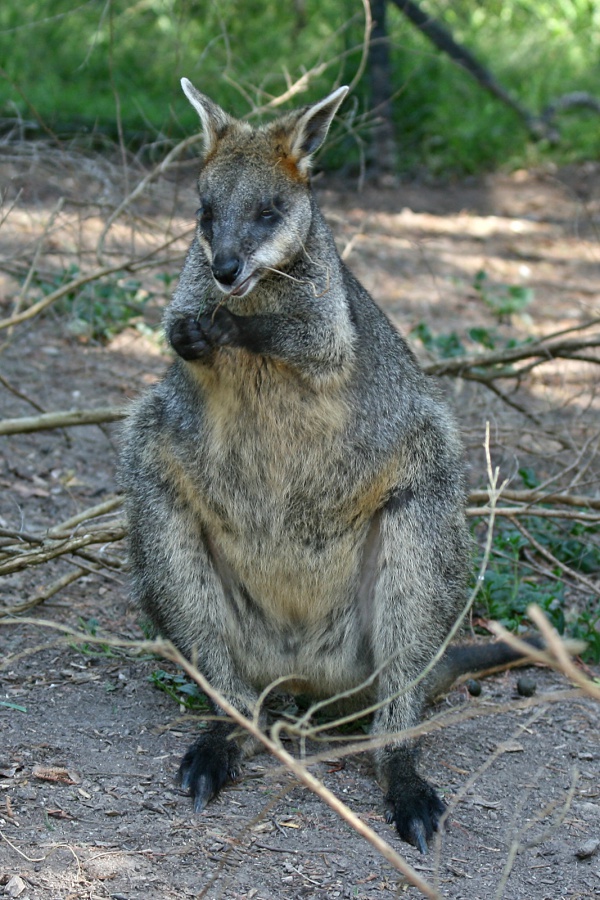Facts About Swamp (Black, Black-tailed) Wallaby
The swamp wallaby, also known as the black wallaby, is a small marsupial native to eastern Australia. It is the only species in the genus *Wallabia*. These wallabies inhabit a variety of environments along Australia's east coast, favoring dense undergrowth in forests and woodlands. They are distinguished by their unique color variations and distinctive movement patterns compared to other wallabies.
Swamp wallabies reach reproductive maturity between 15 and 18 months and can breed year-round. Their gestation period lasts between 33 and 38 days, culminating in the birth of a single joey that remains in the pouch for about 8 to 9 months. Remarkably, female swamp wallabies can become pregnant almost immediately after giving birth due to a phenomenon called embryonic diapause. This allows them to be continuously pregnant throughout their lives.
Regarding their diet, swamp wallabies are primarily solitary feeders. They consume a variety of plants, including shrubs, pasture, and even some toxic vegetation. Their teeth are specially adapted for browsing, making shrubs and bushes their preferred diet over grasses. They also eat fungi, bark, and occasionally carrion.
Taxonomically, the swamp wallaby is unique enough to warrant its own genus, *Wallabia*. However, genetic studies indicate that it might actually belong within the larger genus *Macropus*, which could potentially lead to a future reclassification.
